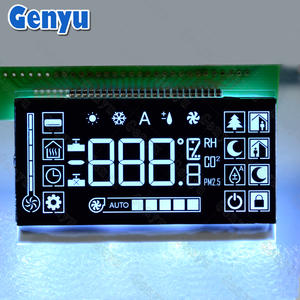In the ever-evolving world of display technology, two terms frequently pop up: LCD and LED. While they might seem similar at first glance, they represent different technologies with unique characteristics. Understanding the differences between LCD and LED displays can help consumers make informed decisions when purchasing televisions, monitors, or other display devices.

1. Understanding LCD Displays
LCD stands for Liquid Crystal Display. This technology has been around for decades and is widely used in various devices, from digital watches and calculators to computer monitors and televisions. Here’s how it works:
1). Structure: An LCD display consists of several layers, including a backlight, polarizing filters, and liquid crystal molecules sandwiched between glass panels.
2). Operation: The liquid crystals do not emit light directly. Instead, they modulate the light from the backlight to create images. When an electric current passes through the liquid crystals, they change alignment, altering the light's passage through the pixels.
3). Backlighting: Traditional LCDs use Cold Cathode Fluorescent Lamps (CCFL) for backlighting, which provides uniform light but can consume more power and offer less contrast compared to newer technologies.
2. Understanding LED Displays
LED stands for Light Emitting Diode. However, when we refer to LED displays, we're often talking about LED-backlit LCDs rather than a distinct display technology. Here’s the breakdown:
1). Structure: LED displays are essentially advanced LCD displays that use LEDs for backlighting instead of CCFLs.
2). Operation: The primary difference lies in the backlighting method. LEDs can be placed either around the edges of the screen (edge-lit) or directly behind the screen (full-array).
3). Advantages: LEDs provide several benefits over CCFLs, including better energy efficiency, brighter displays, and the ability to produce deeper blacks through local dimming (especially in full-array setups).
3. Key Differences Between LCD and LED Displays
1). Backlighting:
LCD: Uses CCFLs which are less efficient and provide less control over brightness and contrast.
LED: Uses LEDs which are more energy-efficient, provide better brightness, and allow for local dimming.
2). Image Quality:
LCD: Generally offers good image quality, but can suffer from issues like lower contrast ratios and uneven lighting.
LED: Provides improved image quality with higher contrast ratios, better brightness, and more uniform lighting.
3). Power Consumption:
LCD: Typically consumes more power due to the less efficient CCFL backlighting.
LED: More energy-efficient, reducing overall power consumption and offering eco-friendly benefits.
4). Lifespan:
LCD: CCFLs have a shorter lifespan compared to LEDs.
LED: LEDs last longer, making LED-backlit displays more durable and reliable over time.
5). Design and Form Factor:
LCD: Can be bulkier due to the CCFL backlighting.
LED: Allows for thinner and lighter designs, contributing to sleeker and more modern-looking devices.
4.Applications and Market Trends
Both LCD and LED technologies are widely used in various applications, including televisions, computer monitors, smartphones, and digital signage. However, the trend is increasingly moving towards LED displays due to their superior performance, energy efficiency, and design flexibility. The ongoing advancements in LED technology, such as the development of Mini-LED and Micro-LED, are pushing the boundaries further, promising even better image quality and energy efficiency.
In conclusion,in the battle of LCD vs LED, it's clear that while both technologies have their place, LED displays generally offer more advantages. From better image quality and energy efficiency to longer lifespan and sleeker designs, LED-backlit LCDs are becoming the preferred choice for consumers and manufacturers alike. As technology continues to advance, we can expect further innovations that will enhance the viewing experience and push the boundaries of what display technology can achieve.